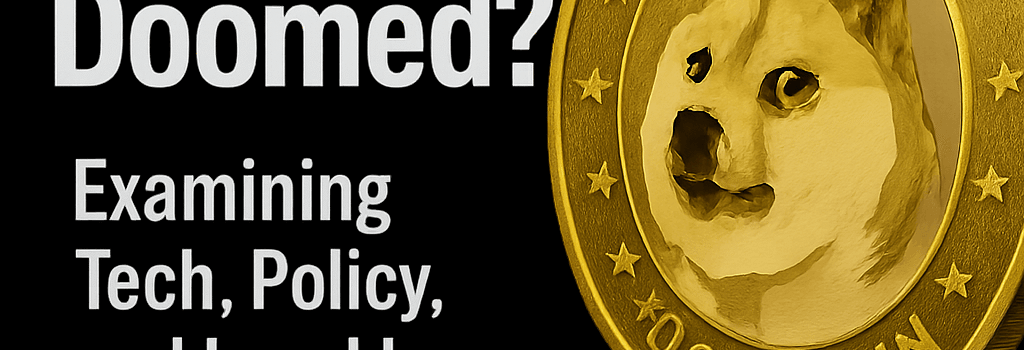Is DOGE Doomed? Examining Tech, Policy, and Legal Issues

By Ashley Belanger – Updated Jul 10, 2025
Overview: A Controversial Mandate
The Department of Government Efficiency (DOGE), launched in early 2025 under President Donald Trump with Elon Musk as its chief architect, was tasked with slashing government waste and saving $1 trillion over four years. To date, DOGE claims $180 billion in savings, but independent audits suggest up to 40% of those figures are overstated.
Recent Developments
- Jul 2, 2025 hearing: Bipartisan subcommittee grill DOGE leadership on inflated metrics.
- Citizens for Ethics report (Jul 5): Projects up to $10 billion in lost economic activity from cuts.
- Late May: Musk resigns “special government employee” status; DOGE’s real-time savings dashboard frozen at June 3 figures.
- Court-ordered FISMA & FedRAMP reviews examine DOGE’s unprecedented access to classified systems without full clearances.
Main Criticisms
- Poor Service Delivery: Social Security customer calls spike 25% after staffing cuts.
- Brain Drain: Key IT specialists, including eight cloud architects, resigned en masse.
- Rehiring Backlog: Agencies like FEMA scramble to refill 1,200 critical positions ahead of hurricane season.
Technical Architecture and Data Analytics
DOGE’s tech backbone was modeled on a Silicon Valley “move fast and break things” ethos:
- Cloud Infrastructure: Deployed across AWS GovCloud and Azure Government, using Terraform for IaC (Infrastructure-as-Code).
- Data Lake & Analytics: Centralized logs in an ELK stack; attempted to integrate Palantir-style ML fraud detection pipelines but faced schema mismatches between 25 legacy systems.
- CI/CD & Containerization: Microservices in Docker & Kubernetes, but incomplete RBAC (Role-Based Access Control) led to at least three privilege escalation events.
- API Integrations: Real-time dashboards powered by GraphQL gateways, yet missing automated input validation caused several modules to underreport savings.
Legal and Regulatory Implications
Experts warn DOGE’s methods test the limits of executive authority:
“By unilaterally furloughing Congress-funded positions, DOGE skirts Appropriations Clause requirements,” said Elaine Kamarck of Brookings.
Key legal concerns include:
- Security Clearance Lapses: 15% of DOGE staff were granted Interim Secret clearances without full background checks.
- Data Governance Violations: Noncompliance with NIST SP 800-53 controls and delayed FedRAMP authorization for high-impact systems.
- Constitutional Challenges: Pending suits argue DOGE infringes on Congress’s power of the purse by de facto defunding agencies.
Comparative Case Studies
Understanding DOGE’s trajectory requires comparing it to prior government modernization efforts:
- U.S. Digital Service (2014): Emphasized agile sprints, user research, and incremental Q&A, resulting in 70% reduction in 18F procurement timelines.
- PART Ratings (Bush era): Focused on performance metrics but lacked technical depth, leading to repetitive rebranding rather than structural reform.
- UK Government Digital Service: Combined cross-agency governance with open-source frameworks, avoiding mass layoffs in favor of retraining and code-sharing.
Deep Dive: Cost–Benefit Analysis
According to Citizens for Ethics:
- DOGE cuts at CFPB: Lost potential recoveries of $26 billion (2011–21 baseline).
- IRS audit capacity down 30%, risking $500 billion in uncollected revenue.
- Projected net economic drag: Over $10 billion annually from unemployment benefits, vendor penalties, and delayed grants.
Expert Opinions
Max Stier (Partnership for Public Service): “The administration’s failure to calibrate agile practices for government scale led to systemic outages”.
Troy Monte (Finance student): “DOGE’s real cost will be in eroded public trust and institutional memory, not just dollars saved.”
Future Outlook and Recommendations
With DOGE facing a potential sunset on July 4, 2026, stakeholders are divided:
- Republicans propose codifying the “DOGE process” via legislation granting the president explicit authority to reorganize agencies — akin to a permanent executive office.
- Democrats urge a pivot to proven IT modernization programs (USDS, 18F), emphasizing incremental reform, open standards, and workforce development.
Recommended best practices:
- Institutionalize data-driven metrics with third-party audits every quarter.
- Expand FedRAMP & FISMA compliance training before any further staff redeployments.
- Adopt a hybrid workforce model: retrain federal specialists rather than defaulting to layoffs.
Conclusion
DOGE’s promise of a trillion-dollar windfall remains elusive. If DOGE’s next audit shows federal spending unchanged or the deficit unchanged by 2029, the agency risks permanent dissolution. Meanwhile, every service interruption — from FEMA’s readiness gaps to IRS audit delays — underscores the peril of rushing cuts before capabilities are resecured.
Additional Sections
Political Dynamics Ahead
As Trump and Musk publicly distance themselves, DOGE’s leadership vacuum could shift oversight to cabinet secretaries. Future funding hinges on the Jul 2025 appropriations cycle, where $45 million is at stake.
Public Sector Workforce Impacts
Federal IT talent shortages, already critical, may be exacerbated by DOGE’s churn. Agencies report average vacancy rates of 12% in mission-critical IT roles.
Global Implications
Other governments are watching closely: Canada’s Treasury Board has paused similar efficiency drives, citing “lessons from DOGE” in risk of service collapse.